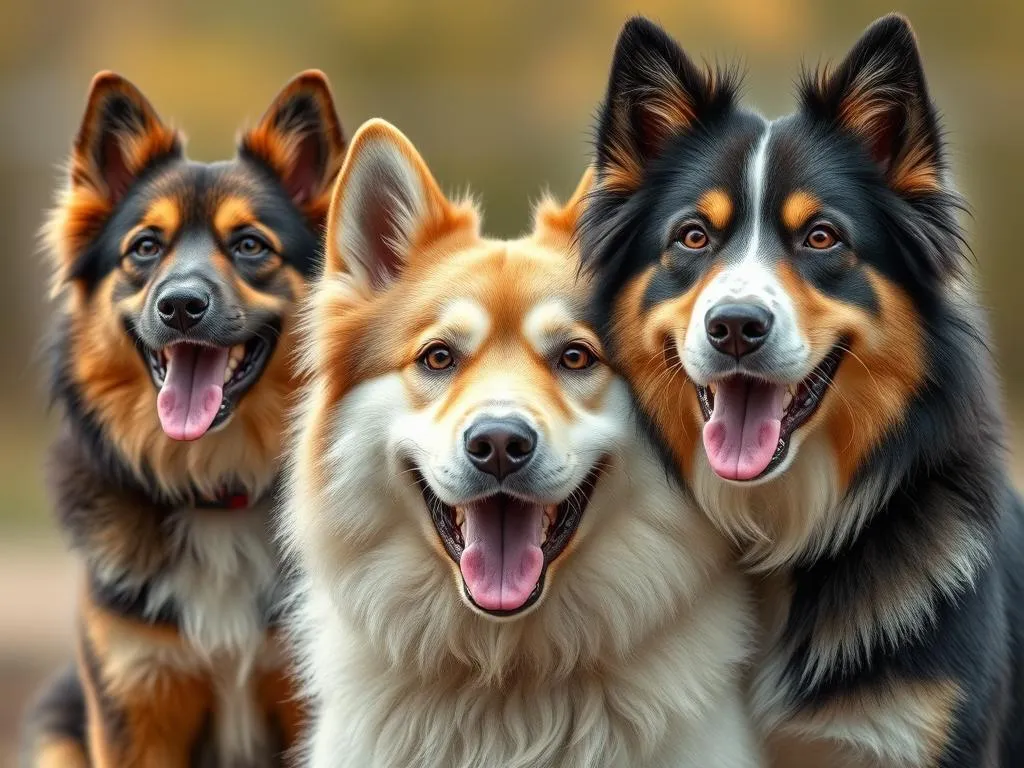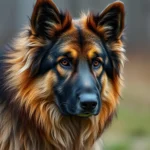
Introduction
Dog breeds refer to the various groups of domestic dogs, each possessing specific characteristics, temperaments, and physical traits that distinguish them from one another. Within the rich tapestry of dog breeds, certain breeds hold a special place in the hearts of dog lovers in Japan. The importance of dog breeds in Japan transcends mere companionship; these animals are integral to the culture, embodying values of loyalty, family, and tradition. Over time, preferences for certain dog breeds have evolved, influenced by lifestyle changes, urbanization, and international trends.
In this article, we will explore the most popular dog breeds in Japan, offering insights into their characteristics, historical significance, and reasons for their popularity among pet owners.
Overview of Dog Ownership in Japan
Statistics on Dog Ownership
Japan has witnessed a significant rise in pet ownership over the past few decades, with dogs being one of the most popular choices for pets. According to recent statistics, approximately 9 million dogs are owned in Japan, making them a cherished part of many households. This figure places Japan among the top countries globally for dog ownership, reflecting a deep-rooted affection for these animals.
When comparing dog ownership rates, Japan stands out for its unique culture surrounding pets. Unlike some other countries where larger breeds dominate, Japanese dog owners often prefer smaller breeds, suitable for urban living conditions.
Factors Influencing Dog Ownership
The urban landscape of Japan greatly influences dog ownership. With densely populated cities and limited living space, many pet owners opt for smaller, more adaptable dog breeds. Furthermore, cultural attitudes towards pets in Japan emphasize the importance of treating dogs as family members, leading to a rise in demand for breeds that suit various lifestyles.
Historical Context of Dog Breeds in Japan
Indigenous Japanese Dog Breeds
Japan is home to several indigenous dog breeds that have played vital roles throughout its history. The Shiba Inu and Akita Inu are two of the most notable examples. The Shiba Inu, known for its spirited personality and fox-like appearance, has been a part of Japanese culture for centuries, originally bred for hunting small game. Similarly, the Akita Inu, larger and more powerful, was historically used for hunting and guarding.
These breeds are not only beloved companions but also symbols of Japan’s heritage. Their appearances in folklore and art further solidify their cultural significance.
Influence of Western Breeds
In recent decades, Western dog breeds have gained popularity in Japan, often reflecting global trends in pet ownership. Breeds such as the Toy Poodle and Chihuahua have surged in popularity, particularly in urban areas where their small size makes them ideal for apartment living. This blending of indigenous and Western breeds has enriched the landscape of dog ownership in Japan, creating a diverse array of choices for potential pet owners.
Most Popular Dog Breeds in Japan
Shiba Inu
Characteristics and Traits
The Shiba Inu is perhaps the most iconic dog breed in Japan. Known for its compact size, typically weighing between 17 to 23 pounds, this breed boasts a spirited and confident demeanor. Shiba Inus are highly intelligent, making them quick learners, though they may also exhibit a stubborn streak. Their grooming needs are moderate, requiring regular brushing to maintain their double coat.
Cultural Significance
The Shiba Inu holds a prominent place in Japanese culture, often celebrated in art, literature, and even as a mascot for various brands. Its likeness has transcended borders, becoming a global symbol of Japan. The breed’s portrayal in media, like the famous “Hachiko” story, underscores its qualities of loyalty and devotion, resonating deeply with Japanese values.
Akita Inu
Characteristics and Traits
The Akita Inu is another cherished breed, known for its strength and loyalty. Weighing between 70 to 130 pounds, Akitas are larger than Shiba Inus and possess a noble appearance. Their temperament is typically calm and dignified, making them excellent family pets. Grooming requirements are similar to Shibas, with regular brushing needed to manage their thick fur.
Historical Background
The Akita Inu’s heritage is steeped in history; its roots trace back to the northern regions of Japan. These dogs were originally bred for hunting large game and later became symbols of loyalty and protection. The tale of Hachiko, an Akita who waited faithfully for his deceased owner, illustrates the profound bond between this breed and its human companions.
Toy Poodle
Characteristics and Traits
The Toy Poodle has gained immense popularity in Japan, particularly in urban settings. Weighing around 4 to 6 pounds, this breed is known for its intelligence and agility. Toy Poodles have a playful temperament and are highly trainable. Their hypoallergenic coat is a significant selling point, appealing to those with allergies.
Reasons for Popularity
The adaptability of the Toy Poodle to small living spaces makes it a preferred choice for city dwellers. Additionally, their friendly nature and minimal shedding contribute to their status as one of the most popular dog breeds in Japan. Owners appreciate their versatility, as they can thrive in various activities, from dog sports to companionship.
Dachshund
Characteristics and Traits
The Dachshund is a small breed characterized by its elongated body and short legs. Weighing between 16 to 32 pounds, Dachshunds are known for their curious and playful personalities. They come in various coat types, including smooth, long-haired, and wire-haired. Regular grooming is essential to maintain a healthy coat, especially for long-haired varieties.
Popularity in Urban Areas
Dachshunds have found favor among urban residents due to their manageable size and lively demeanor. Their adaptability to apartment living, coupled with their affectionate nature, makes them excellent companions. The breed’s playful antics and loyalty to their families have solidified their place as a beloved choice in Japan.
Chihuahua
Characteristics and Traits
The Chihuahua is one of the smallest dog breeds, typically weighing between 2 to 6 pounds. Despite their tiny stature, Chihuahuas possess a bold and confident personality. They are known for their loyalty and can be quite protective of their families. Grooming needs are minimal, with short-haired varieties requiring little maintenance.
Cultural Trends
The rise of the Chihuahua in Japan has been influenced by pop culture and celebrity ownership. Often seen as fashionable accessories, Chihuahuas have captured the hearts of many, becoming a trendy choice for dog lovers. Their small size and charming demeanor make them perfect companions for those seeking a portable pet.
Other Notable Breeds
In addition to the aforementioned breeds, several others are gaining popularity in Japan. The French Bulldog and Cavalier King Charles Spaniel have become increasingly sought after for their friendly natures and adaptability. Each breed brings its unique characteristics, appealing to various pet owners looking for companionship tailored to their lifestyles.
Choosing the Right Dog Breed in Japan
Considerations for Potential Dog Owners
When choosing a dog breed, potential owners should consider several lifestyle factors. Space availability, activity level, and family dynamics play crucial roles in determining the best fit. For instance, families with small children may prefer breeds known for their gentle temperaments, while active individuals might seek out more energetic breeds.
Understanding breed characteristics is essential to ensure compatibility with living conditions. For instance, larger breeds might struggle in smaller apartments, while small breeds may not fare well in households with larger pets.
Breeder vs. Adoption
Deciding whether to purchase a dog from a breeder or adopt from a shelter is a significant choice for potential dog owners. Each option has its pros and cons. Breeders often provide specific breed characteristics and health guarantees, while shelters offer the opportunity to give a home to a dog in need.
Resources for finding reputable breeders and shelters are available throughout Japan, making the process of selecting a dog more accessible and informed for prospective pet owners.
Care and Maintenance of Popular Breeds
General Care Guidelines
Each breed has unique care requirements, but general guidelines apply across the board. Regular feeding with high-quality dog food, routine grooming, and consistent exercise are foundational to maintaining a pet’s health. The specific needs may vary based on breed size and temperament, so owners should tailor their approach accordingly.
Health Considerations
Many popular breeds in Japan face certain health issues. For instance, Shiba Inus are prone to hip dysplasia and certain eye conditions, while Akitas may experience autoimmune disorders. Regular veterinary check-ups and vaccinations are crucial for ensuring the health of these beloved pets. Owners should also stay informed about breed-specific health concerns to provide the best care possible.
Conclusion
The most popular dog breeds in Japan reflect a blend of tradition and modernity, showcasing the country’s rich cultural heritage and evolving pet ownership trends. As dog ownership continues to rise, understanding the unique characteristics and historical significance of these breeds will help ensure responsible pet ownership and a deeper appreciation for the bond between humans and dogs.
In embracing the joy of dog ownership, potential pet owners are encouraged to consider their lifestyle and the specific needs of each breed, fostering a harmonious relationship that honors the beloved dogs that enrich their lives.









